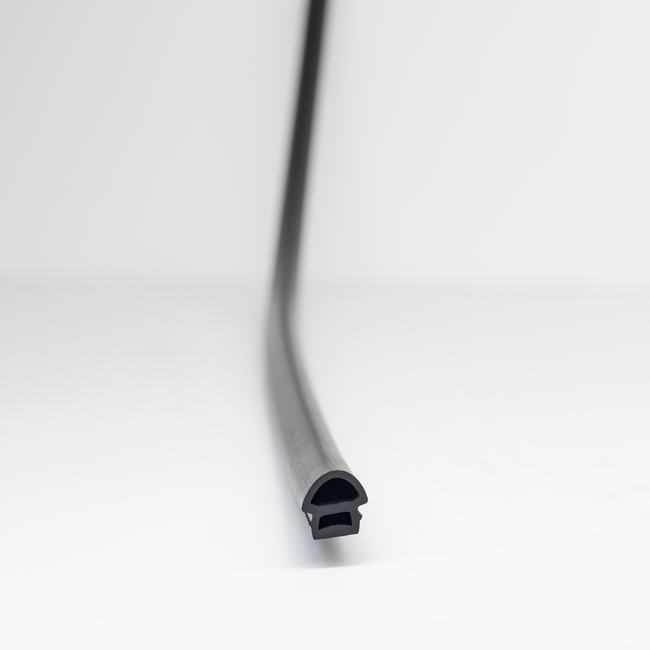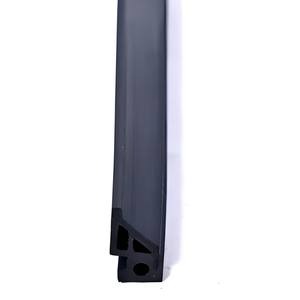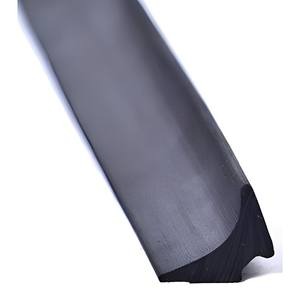Steel door seals, also commonly known as door gaskets or weatherstripping, are essential components used in various applications to seal gaps and crevices around steel doors. These seals are designed to provide a barrier against the infiltration of air, water, dust, noise, and even insects, thereby enhancing the energy efficiency, security, and comfort of a building or structure. In this comprehensive description, we will delve into the various aspects of steel door seals.
- Purpose and Function:
Steel door seals are primarily employed to serve several key functions:
- Energy Efficiency: They help in preventing the escape of conditioned air and the entry of outdoor air, contributing to improved energy efficiency in heating and cooling systems.
- Weather Resistance: They act as a barrier against rain, snow, and wind, preventing water infiltration and reducing drafts.
- Sound Insulation: Steel door seals can dampen noise transmission, creating a quieter indoor environment.
- Security: By sealing gaps around doors, they can enhance security by inhibiting unauthorized entry and intrusion.
- Aesthetics: They provide a finished, clean appearance to door installations and conceal gaps.
- Types of Steel Door Seals:
Various types of steel door seals are available to meet specific requirements and applications:
- Door Bottom Sweeps: Installed at the bottom of the door to block drafts and keep out pests.
- Door Thresholds: Positioned beneath the door to form a seal with the floor, enhancing weather resistance.
- Door Jamb Seals: Placed along the door frame to seal gaps on the sides and top of the door.
- Magnetic Seals: Utilize magnetic attraction to ensure a tight seal when the door is closed.
- Adhesive-Backed Seals: Feature an adhesive backing for easy installation on the door frame.
- Materials and Construction:
Steel door seals are available in a variety of materials to accommodate different applications:
- Rubber or Neoprene: Known for their durability and flexibility, these materials are effective at sealing gaps and blocking drafts.
- Silicone: Resistant to extreme temperatures and UV exposure, making them suitable for outdoor use.
- Vinyl: Economical and versatile, vinyl door seals offer good weather resistance.
- **Metal: Aluminum or stainless steel strips with brushes or blades provide a durable and low-friction seal.
- Installation and Maintenance:
Proper installation of steel door seals is vital to their effectiveness. Installation typically involves measuring and cutting the seal to the appropriate length, aligning it with the door frame or bottom, and securing it in place. Adhesive-backed seals are simple to install, while others may require screws or clips. Maintenance involves periodically inspecting the seals for wear, tears, or detachment. Replacing damaged seals promptly is essential to maintain their functionality. - Benefits:
Steel door seals offer a range of advantages:
- Energy Savings: They reduce energy consumption by preventing the loss of heated or cooled air.
- Improved Comfort: By blocking drafts and reducing noise, they create a more comfortable living or working environment.
- Weather Protection: They protect against the elements, keeping interiors dry and safe.
- Security: Enhancing door sealing can deter unauthorized access.
- Longevity: Quality door seals have a long lifespan and require minimal maintenance.
In conclusion, steel door seals are indispensable components for enhancing the performance and functionality of steel doors in various applications. They play a crucial role in conserving energy, providing weather resistance, and improving security and comfort. The choice of seal type and material should be based on the specific requirements of the door and its intended use, and proper installation and maintenance are essential for optimal performance.







